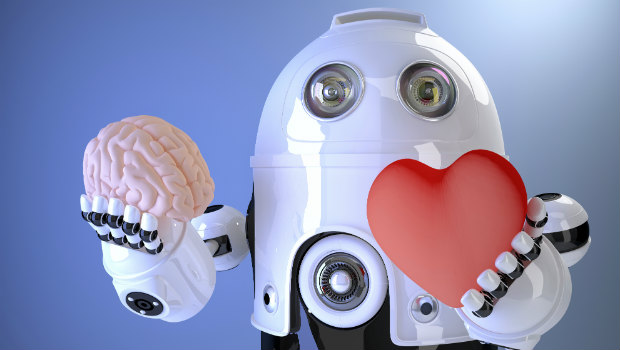AI and the future of work
Here on the iMeet Central team, we’re somewhat obsessed with the future of work. We’re really excited, then, about the new blog series from PGi on this topic.
To kick it off, PGi’s Andrea Duke took a look at artificial intelligence and the ramifications of AI on our future workplaces. As we continue to smarten up our homes, how will technology evolve to keep pace at the office, and to change the way knowledge workers work? What sort of jobs will be created in the AI era? Which jobs will be put at risk?
This article was previously published on the PGi blog, which you should be sure to check out, as it’s a cornucopia of insights on the future of business collaboration.
***************
Over the last several decades, technology has changed tremendously. I can’t tell you how many times my father has told me about a computer science class he took in college where the computer required punch cards to function (sorry to date you Dad!). Fast-forward and we have artificial intelligence at the palm of our hands, hands-free texting in our cars and smart watches that monitor our health from our wrists. But it’s not only our personal lives that have been affected by these changes in technology, it’s our work lives as well.
At PGi, we’re always trying to innovate our products to make your work life easier, so naturally we’re curious about new technology and the effect it has on our work lives. Over the next few weeks, we will be producing a blog series on just that—the future of work. And in this edition, we’ll be taking a look at the rise of artificial intelligence and its power to change how we work.
It’s Not All About You, Siri
Some of the most common examples of artificial intelligence are those that are consumer-facing that help us in our personal lives. Take Siri for example, which is built on the backs of generic APIs. You can ask her what the weather will be like today, and Siri will reach out to weather service like weather.com and use your location as a proxy to give you a real-time answer.
Same goes for Amazon’s Alexa and Microsoft’s Cortana. But what happens when you try to implement this type of artificial intelligence into the workplace? Well, things get a little more complicated. There are a host of variances in your organizational processes, systems and preferences that consumer-built AI can’t distinguish between.
That’s where companies like x.ai come in. The company has produced an AI-powered personal assistant named Amy who supports users with scheduling meetings. Amy takes the tedium of pinging emails back and forth to figure out the best time and location for your meeting, and bases her conclusion on your schedule and preferences. With more and more AI technologies emerging to assist in our daily work lives, it’s easy to see why some are concerned about the potential loss of jobs that have been held by humans for the last couple of decades.
Vertical vs Horizontal AI
In PGi’s 2016 Future of Business Collaboration eBook, x.ai’s founder and CEO, Dennis R. Mortensen, said “Right now, we are in the middle of a shift from a world in which our machines assist knowledge workers to one in which they take over entire ‘jobs to be done’.” These “jobs to be done” are a popularized notion from Harvard Business School professor Clay Christensen. According to the theory, customers consume products and services to get a job done, and are far less attached to the specific process than accomplishing the jobs.
According to Mortensen, “Any one of the 87 million knowledge workers in the U.S. performs dozens of these types of jobs every day. From retrieving documents and writing emails, to analyzing data and scheduling meetings, it hardly bears mentioning that we complete many tedious tasks daily.” And these tedious tasks are what today’s “Vertical AI” agents aim to take over.
“These sorts of agents are what I describe as Vertical AI—they are laser-focused on executing one job, whether that’s writing data-based stories and scheduling meetings, or diagnosing illness and then recommending the appropriate treatments,” says Mortensen. In contrast, Mortensen coins consumer-based AI, such as Siri and Alexa, as “Horizontal AI”, which have no single use case and function more as a larger question-and-answer machine.
What’s Next for AI?
With the addition of more and more Vertical AI agents, our mundane tasks may become automated, freeing up an enormous amount of creative energy for humans. But, that’s not to say that jobs will be lost due to increased AI in the workplace. In fact, Mortensen argues that new AI in the workplace will create jobs such as interaction designers, who can improve the interaction between the AI agent and human user.
“Over time, I believe knowledge workers will realize some of the benefits of automation: they’ll be able to hand over a slew of repetitive, rule-bound “jobs” that have diverted their energy from work that requires creativity, empathy and wisdom,” says Mortensen.
What are your thoughts on AI in the workplace? Do you think there will come a time when AI becomes powerful enough to take over our mindless tasks, allowing us to be more productive workers?






